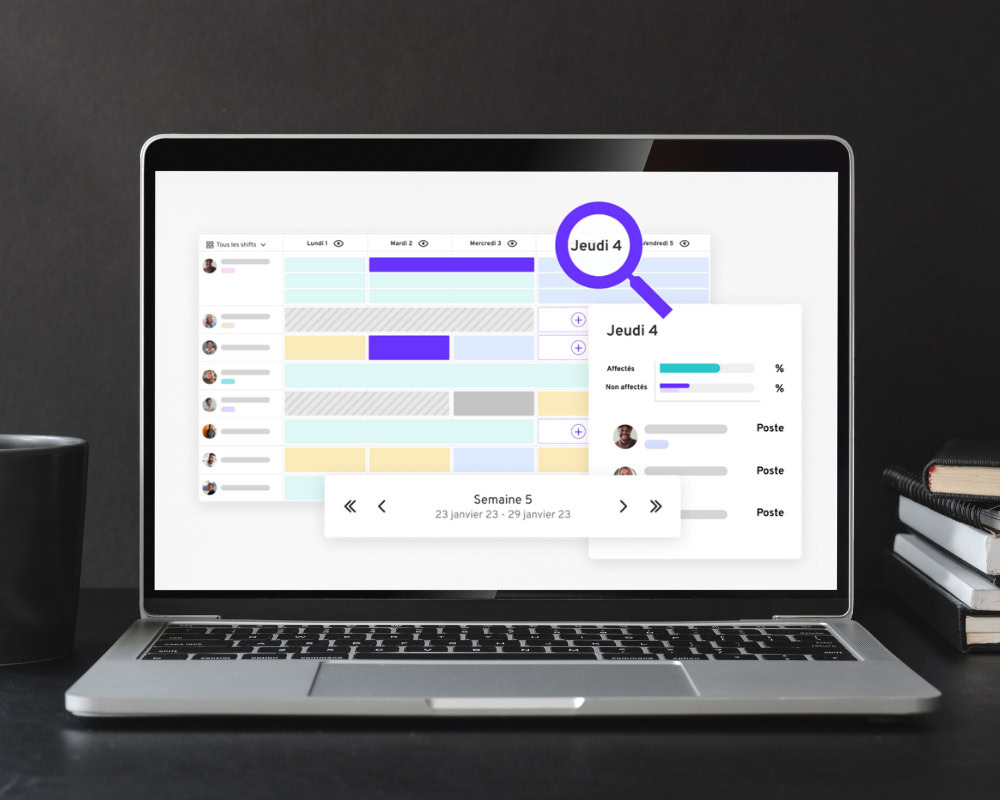Strategic Workforce Planning is a tool that enables companies to plan the resources they are likely to need to achieve their objectives. Implementing such a plan brings valuable strategic, financial and operational benefits. What are the challenges of this tool? How can it be deployed in your company? We take stock.
Strategic Workforce Planning: what exactly is it?
Definition:
Strategic Workforce Planning, often referred to by its acronym SWP, is a method for aligning a company's human resources with its strategic objectives. In concrete terms, it involves precisely identifying the skills present within the organization, in order to anticipate the recruitment, training or redeployment needs required to implement the global strategy. This definition may remind you of GPEC. In fact, both methods focus on the notion of skills, and both serve a similar purpose: to ensure that human resources are in line with the company's aspirations.
How does it differ from GPEC?
Gestion Prévisionnelle des Emplois et des Compétences (GPEC) and Strategic Workforce Planning are not mutually exclusive - on the contrary. They are complementary approaches, and the difference lies in the type of information used.
Whereas GPEC aims to map jobs and skills within an organization, Strategic Workforce Planning offers a more analytical vision, based on quantified data.
How does SWP work?
There are three main stages in implementing a Strategic Workforce Planning methodology:
- Make an inventory of existing skills: the company should be able to map out the skills it possesses, for each profession and for each employee.
- Draw up a forecast to identify future needs. These may be technical, strategic or structural changes. The aim is to define the impact of these changes on human resources requirements.
- Adjust resources to meet previously defined objectives.
Why implement Strategic Workforce Planning?
Digital transformation is gathering pace, and with it comes a host of changes in the world of work. At a time when 85% of the jobs of 2030 don't yet existBut that's not all. But that's not all: used correctly, the SWP is a powerful tool in the service of several challenges:
Anticipating tomorrow's professions
To prepare your company for the future, you need to start by being fully aware of today's resources. In fact, having a map of skills and associated competencies enables you to make the right decisions in terms of training, recruitment or redeployment. Let's take the example of the automotive industry, which is particularly sensitive to legal constraints. There's a lot of talk about the phasing out of internal combustion vehicles by 2035. What will become of the people who have been working in this field for years?
Strategic Workforce Planning helps to link the company's strategic vision (to go electric) with the skills it already has. Instead of laying off operators and recruiting new staff, the company can set up training plans to support the workforce in this transition.
Giving power back to managers
When HR and field information are in silos, it's harder for managers to effectively manage their teams. HR, on the other hand, struggles to anticipate recruitment and training needs. Thanks to the SWP, this data is centralized, so that each stakeholder can use it to better organize itself.
For managers, the benefits are considerable, as it becomes much simpler to draw up assignment schedules and request appropriate training for their teams. As a result, they spend less time and energy on these low-value-added tasks.
Control staff costs
Centralizing HR data is an invaluable aid to budget management. In fact, it enables us to visualize where investment can be made to operationalize strategic objectives. Let's take the automotive industry as an example. Strategic Workforce Planning not only lists the stages involved in switching from combustion to electric vehicles, but also puts a figure on them. In this way, the company can estimate how many people will need to be trained, how many new positions will need to be filled, and so on. The same applies when a company has the ambition to conquer a new market: it must start by checking that it has the appropriate human capital to do so.
Of course, this requires close collaboration with the IS and Finance functions to identify and exploit important metrics.
Gaining agility
Last but not least, SWP can be an invaluable aid to companies striving for greater agility. In today's competitive environment, we need to be able to respond rapidly to external changes.
Thanks to Strategic Workforce Planning, human resources can be considered in an agile way, enabling organizations to minimize risks such as talent shortages.
How do you set up a Strategic Workforce Planning plan?
The three main stages of a SWP plan
After theory comes practice. You may be wondering how to go about implementing SWP in your company. The implementation of such a methodology varies from one company to another, depending on its size, sector and objectives. However, it is important to consider the following steps
1: (Re)define the company's mission and vision. This first step lays the foundations for strategic thinking.
2. Get to know the current workforce. Although tedious, this point is essential! The aim is to detail all the professions that make up the company, and to associate information on the associated skills, as well as the types of contracts, authorizations, etc., that are required.
3. Establish a roadmap that includes key success indicators. In particular, it includes figures for recruitment, training and skills requirements by profession.
Depending on the data you already have, creating this plan can be more or less complex. It may be useful to use a tool to assist you in this task.
Mercateam's Strategic Workforce Planning module
As you can see, SWP cannot function effectively without centralized HR and field data. But without the right tools, this can be a complex task. For companies, it's common to use dozens of Excel files, rarely updated, which completely distorts their analysis.
Mercateam provides a concrete solution to this problem, by circulating information from the field to decision-making levels. The data aggregated in the tool is therefore real, and updated daily thanks to information transmitted by team managers.
This data not only enables you to be more agile, but also to control costs and anticipate critical events, such as retirement. In this way, the tool helps you draw up an action plan that is consistent with your business objectives.
In a nutshell
Strategic Workforce Planning helps you align your human resources with your strategic objectives. Implementing such a tool requires a global vision of the skills available to your company at any given time. This data must be centralized and kept up to date. It is also necessary to draw up a roadmap that will help you bring the current situation closer to the one you aspire to in the future. Tools like Mercateam can help you set up a SWP plan for your organization.




